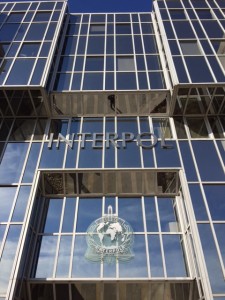FP7-CORE Education – Two new diagrams
Today’s CBRA Blog presents two new diagrams which have been recently designed and developed in the context of FP7-CORE Education and training work (Work package 19.1). The information visualized in the diagram is based on CBRA’s supply chain security research work since year 2001, particularly from the past 5-6 years.
Some background information on the first diagram of crime types in global supply chains has been presented before for example in CBRA’s Blog of 13 October 2014 – Crime taxonomies from Athens. In the center of this diagram we list the crime types – including document fraud and cybercrime – which in the supply chain criminal context are performed in order to succeed with the actual economic or ideological crime, e.g. cargo theft or terrorism.
The left area of the circle lists four examples of crime types, which typically are of primary concern for supply chain companies: cargo theft, sabotage, parallel trade and product specification fraud. With such crime types it is commonly up to the companies to prevent, to detect and to react – of course, law enforcement agencies can be called for any time there is reasonable suspicion of such activities (and naturally in certain cases the government agencies may even be the first ones to detect and react, e.g. in case of armed robberies and truck hijackings).
The right area of the circle deals with supply chain incidents where the authorities typically focus on prevention, detection and reaction: fraud in indirect border taxes; trafficking / violations in cross-border restrictions and prohibitions; human trafficking; and exploitation of illicit labor. From supply chain perspective one can characterize them as “a priori non-disruptive illegal activities – only if / after authorities detect the violations, the supply chain is disrupted and the involved supply chain companies can get in trouble”.
Lastly, on the bottom area of the circle, we list four supply chain crime areas where the prevention typically is in strong interest of both supply chain companies and governmental agencies – and, the detection and (instant) reaction varies on case-by-case basis: counterfeiting, sales channel violations, sea piracy and terrorism. Counterfeiting hits revenues on both sides of the equation, and, with many products can also be health damaging or even lethal. Not having proper sales licenses, and/or selling to unauthorized buyers – for example cigarettes and alcohol, dual use and strategic goods etc. – can again harm both the involved companies and the society as a whole. And of course, sea pirates hijacking cargo ships; bombs exploding and bringing planes down; and terrorists attacking critical supply chain infrastructures, all are in the best interest of both companies and government agencies to prevent, to detect, and to react – in the fastest and most effective possible manner.
The second new educational diagram below depicts the negative socio-economic impact areas – six in total – caused by twelve typical smuggling and trafficking activities. The data behind it has been presented before e.g. in CBRA’s Blog of 14 January 2015 – Socio-economic damages. Inside the square we present the six societal impact areas – the larger the area, the more links there are between the trafficking activities and the negative impacts. As an example of a “big area”, seven different types of trafficking typically lead into increasing market place distortions and/or unfair competition. In the other extreme, only trafficking in stolen cultural products leads to losses in cultural heritage.
That’s all for the CBRA Blog today – please let us know if you see this type of visualization as beneficial when teaching and learning about the big picture of supply chain security! Thanks, Juha Hintsa ( email: cbra@cross-border.org )



